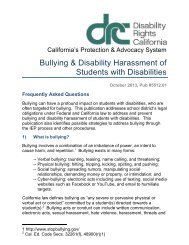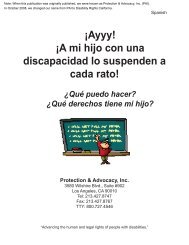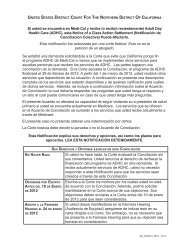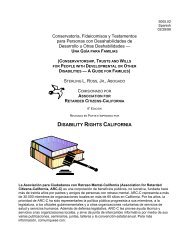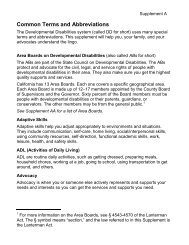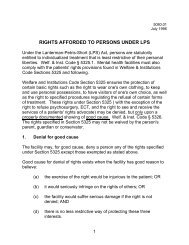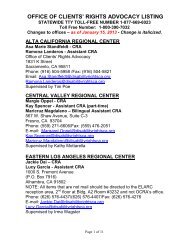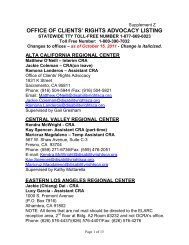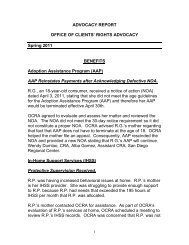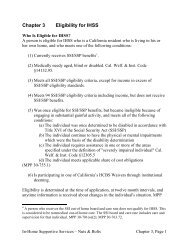special education rights and responsibilities - Disability Rights ...
special education rights and responsibilities - Disability Rights ...
special education rights and responsibilities - Disability Rights ...
Create successful ePaper yourself
Turn your PDF publications into a flip-book with our unique Google optimized e-Paper software.
Information on IEP Process<br />
(10) One year before the student turns 18, include a statement that the student<br />
has been informed that <strong>special</strong> <strong>education</strong> <strong>rights</strong> will transfer to the<br />
student at age 18.<br />
[20 U.S.C. Sec. 1414(d); 34 C.F.R. Secs. 300.116 & 300.320; 5 C.C.R. Sec.<br />
3042(b); Cal. Ed. Code Sec. 56345.]<br />
It is important to underst<strong>and</strong> that the major components of the IEP must relate to<br />
each other. State law requires that each IEP show a direct relationship between the<br />
present levels of performance, the goals <strong>and</strong> objectives, <strong>and</strong> the specific<br />
<strong>education</strong>al services to be provided. [5 C.C.R. Sec. 3040(c).] In other words, the<br />
annual goals should be written based on how the student is presently performing in<br />
school <strong>and</strong> the <strong>education</strong>al services must be sufficient for the student to make<br />
progress toward meeting the annual goals.<br />
20. Are there any other services or <strong>special</strong> factors that must be<br />
considered <strong>and</strong> included in an IEP if appropriate for a student?<br />
Yes. The IEP team must consider, when appropriate:<br />
(1) Strategies, including positive behavioral interventions, <strong>and</strong> supports to<br />
address the behavior of a student whose behavior impedes his learning or<br />
that of others;<br />
(2) Instruction in Braille <strong>and</strong> the use of Braille, for a student who is blind or<br />
visually impaired, unless the IEP team determines after an evaluation of<br />
the student’s reading <strong>and</strong> writing skills, needs, <strong>and</strong> appropriate reading<br />
<strong>and</strong> writing media, that this is not appropriate;<br />
(3) Communication needs, <strong>and</strong> for a student who is deaf or hard of hearing,<br />
consider the student’s language <strong>and</strong> communication needs, opportunities<br />
for direct communications with peers <strong>and</strong> professional personnel in the<br />
student’s language <strong>and</strong> communication mode, academic level, <strong>and</strong> full<br />
range of needs, including opportunities for direct instruction in the his<br />
language <strong>and</strong> communication mode;<br />
(4) Whether the student requires assistive technology devices <strong>and</strong> services;<br />
4 - 15



